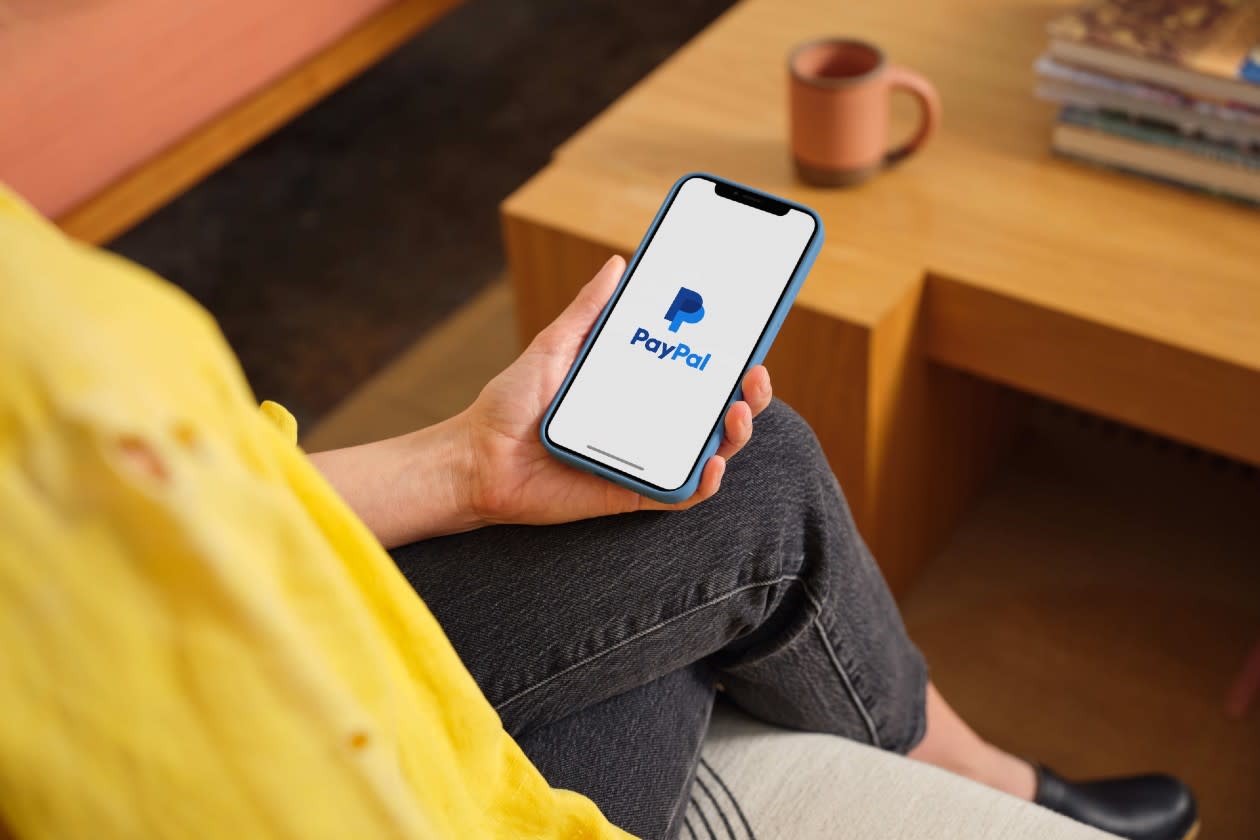PayPal reported second-quarter net revenue of $8.3bn, up 5% when ignoring exchange rate impacts. Total payment volumes rose 5%, with peer to peer and other consumer experiencing the fastest growth, up 10%.
Underlying operating profit rose 13% to $1.6bn. This growth was driven by a 7% uplift in the transaction margin (a bit like gross profit) which was helped by a shift in business mix to more profitable branded checkouts and credit.
Underlying free cash flow fell from $1.1bn to $0.7bn. Net debt was $1.3bn at period-end. The company repurchased $1.5bn of shares in the quarter.
Full-year underlying earnings per share (EPS) guidance has been raised from $4.95-$5.10 to $5.15-$5.30, pointing to growth of between 11-14%. Full-year free cash flow guidance of $6-7bn has been reiterated.
In the third quarter however, transaction margin growth is expected to slow to between 3% and 5%.
The shares fell 8.7% on the day of the announcement.
Our view
PayPal’s second quarter beat and full-year earnings upgrade weren’t enough to stop the shares from sliding on the day. Investors chose to pay more attention to slowing growth in the third quarter and declining market share for the core branded online business. Question marks remain about the payment company’s competitive position in the face of stiff competition, which includes the likes of Apple Pay and Google Wallet.
Efforts are underway to reinvigorate the branded checkout business experience. It’s the company’s key priority, and there’s a long way to go until the rollout’s complete, but so far, the results have been underwhelming. There’s a lot of work to be done if PayPal is to capitalise on the long-term opportunities we see in e-commerce payments. But downturns in consumer confidence, like those currently being felt by online platforms in Asia, can still drag on performance.
There are some encouraging signs of progress elsewhere in the business. The company’s credit offering is performing well. And PayPal’s growth drive in offline payments saw growth spike 60% in the second quarter but it’s a small piece of the puzzle for now. The unbranded payment processing division Braintree is back in growth territory. But given the thin margins in that side of the business we’re not too excited.
Looking ahead, the group is looking to embrace Artificial Intelligence, which has the potential to improve the customer experience for both merchants and consumers. Personalised advertising and the integration of cryptocurrencies and stablecoins into the PayPal wallet are also on the table. But these initiatives are likely to require further investment, and there’s no guarantee of commercial success.
Investors will still need more convincing that PayPal is keeping up with the pack. Increased marketing investment is one lever that management’s pulling, which is all well and good, but we’ll want to see an improvement in growth rates as a result.
A robust balance sheet and strong free cash flows support the forecasted increase in capital expenditures and ongoing share buybacks. However, nothing is guaranteed.
PayPal has made some bold strategic choices to move the business forward, but we’d like to see its market share moving in the right direction before getting too excited. Growth rates continue to lag its peers and that’s reflected in a valuation towards the bottom of the group. Management has its work cut out if it wants to close the gap.
Environmental, social and governance (ESG) risk
The technology sector is generally low-risk in terms of ESG, but some segments like Electronic Components can be more exposed to environmental risks. Regulatory interest in the sector has picked up recently, leading to more acute business ethics risks. Other key risks include labour relations, data privacy and product governance.
According to Sustainalytics, PayPal's overall management of material ESG issues is strong.
Concerns about anti-money laundering processes appear to have been addressed. The company fosters a culture of privacy by design and mandates annual employee training on data privacy. Its diversity programmes are well thought but staff turnover has been relatively high, a trend seen across much of the sector. PayPal is keen to highlight its place as a facilitator of donations to good causes. However there have been concerns raised about the transparency of its giving platform.
PayPal key facts
All ratios are sourced from LSEG Datastream, based on previous day’s closing values. Please remember yields are variable and not a reliable indicator of future income. Keep in mind key figures shouldn’t be looked at on their own – it’s important to understand the big picture.
This article is not advice or a recommendation to buy, sell or hold any investment.No view is given on the present or future value or price of any investment, and investors should form their own view on any proposed investment.This article has not been prepared in accordance with legal requirements designed to promote the independence of investment research and is considered a marketing communication.Non - independent research is not subject to FCA rules prohibiting dealing ahead of research, however HL has put controls in place(including dealing restrictions, physical and information barriers) to manage potential conflicts of interest presented by such dealing.Please see our full non - independent research disclosure for more information.


